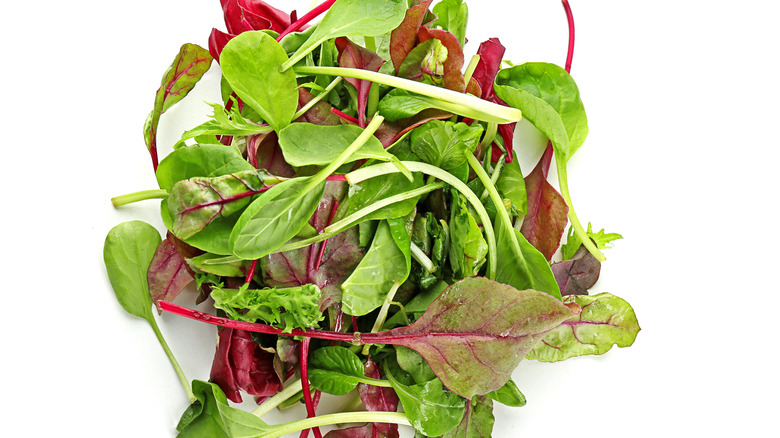Is Spinach Healthier Than Romaine Lettuce?
"Eat your spinach" is a classic directive we've all likely heard at one time or another. And it looks like the message is sinking in. No longer is Popeye the only celebrity that has made spinach a dietary staple. So, if you've resisted eating spinach due to its taste or texture, you should consider giving this vitamin powerhouse another shot.
Spinach, formally known as Spinacia oleracea, is well known for containing many nutrients such as vitamin C, which supports your immune system. Spinach also has vitamin K, which plays a crucial role in blood clotting (via Healthline). And, of course, spinach is also a great source of iron, which can keep anemia in check (via WebMD).
But what if you don't like spinach? Can romaine lettuce serve as a healthy alternative? As it turns out, romaine lettuce holds its own with spinach on a number of nutrients. According to Harvard Health Publishing, romaine lettuce contains ample amounts of certain vitamins. Romaine beats out spinach in the vitamin A department and also contains more folate, which is in the vitamin B family and is important for cell growth (via Mayo Clinic).
How do other kinds of lettuce compare with spinach?
There are seemingly endless options when it comes to the kinds of greens you can use for your salad or in cooking. The most important thing is to make sure to include greens one way or another in your diet. "I think we don't eat enough greens in general, so I'd recommend increasing your intake of them by choosing the ones you like, and not worrying about their nutrient profiles," registered dietician Abby Langer tells Women's Health. However, Langer further recommends that "certainly the darker, heartier greens such as kale and collards have more antioxidants and fiber in them, but if all you can tolerate are iceberg and romaine, by all means don't avoid those."
Langer also emphasizes that whatever greens you choose, it's important that they're fresh. And also only buy the amount you think you'll use.
Besides spinach and romaine, don't forget about the many other greens options out there, such as kale and arugula. Both of these contain a solid amount of nutrients and each has a distinct flavor and texture, so consider switching between them to keep your salad-eating ritual fresh. And if you want to go really nuts, go ahead and combine a few healthy greens in ways you never tried before.
Whatever greens you ultimately decide to enjoy in your salad, you'll be ahead of the game. But a friendly reminder — don't forget to eat your spinach.


